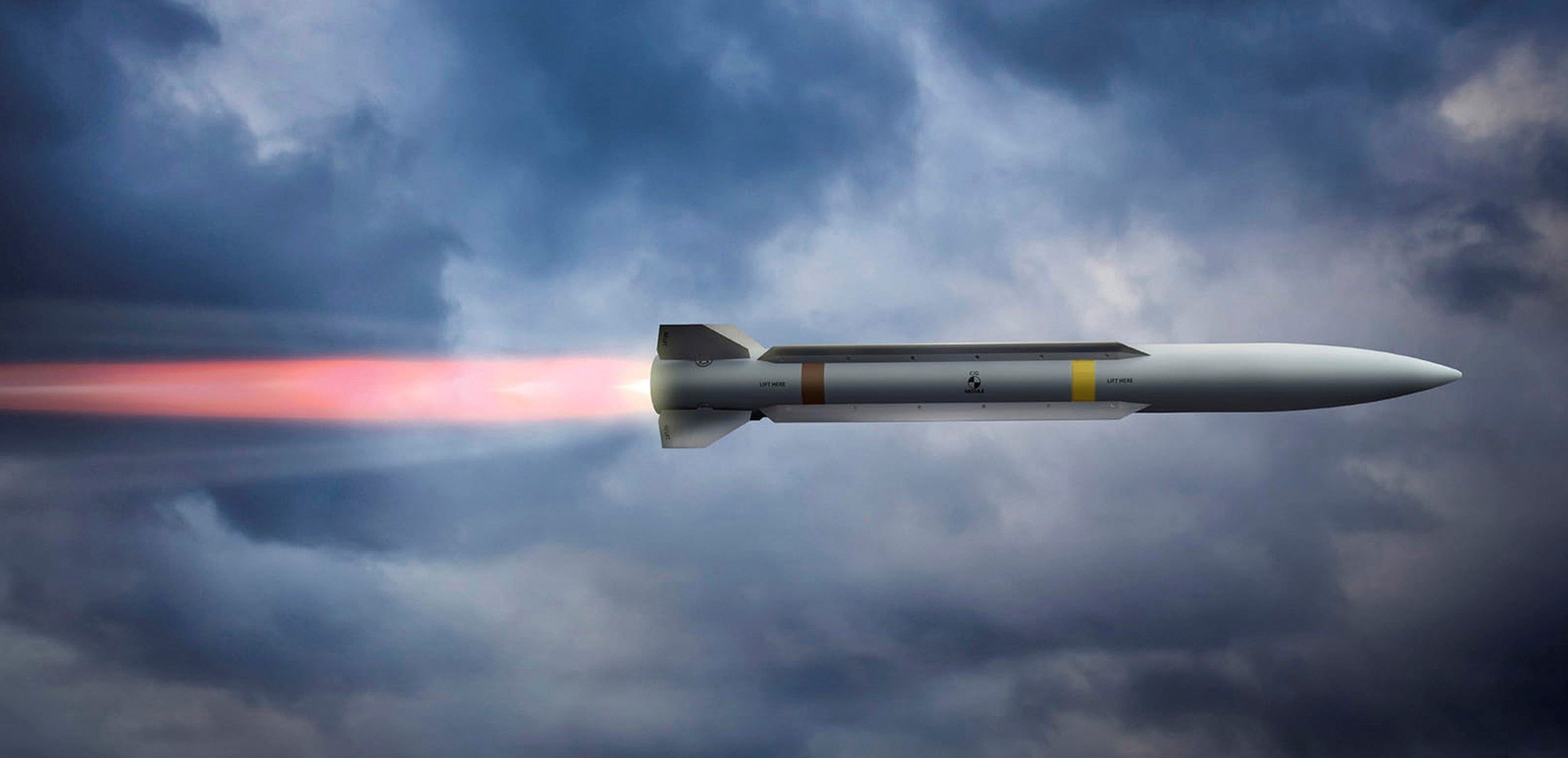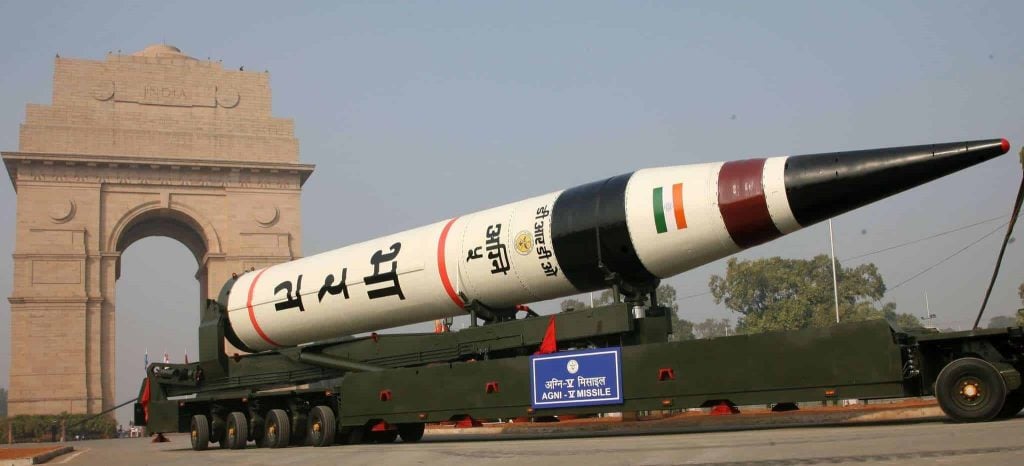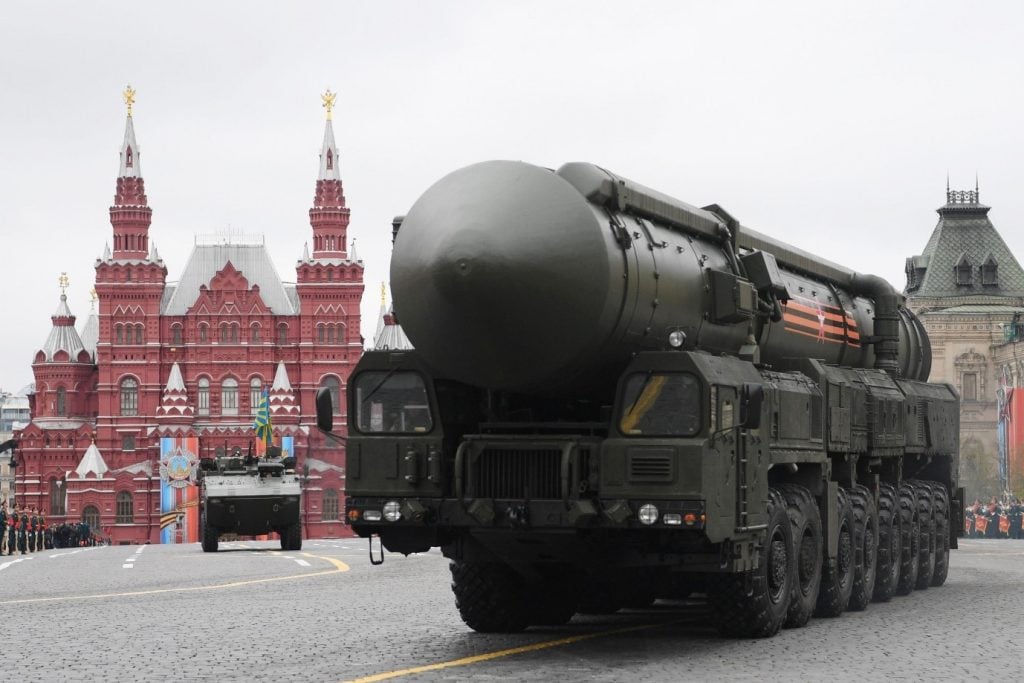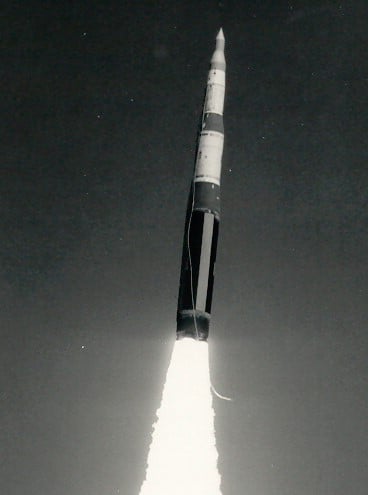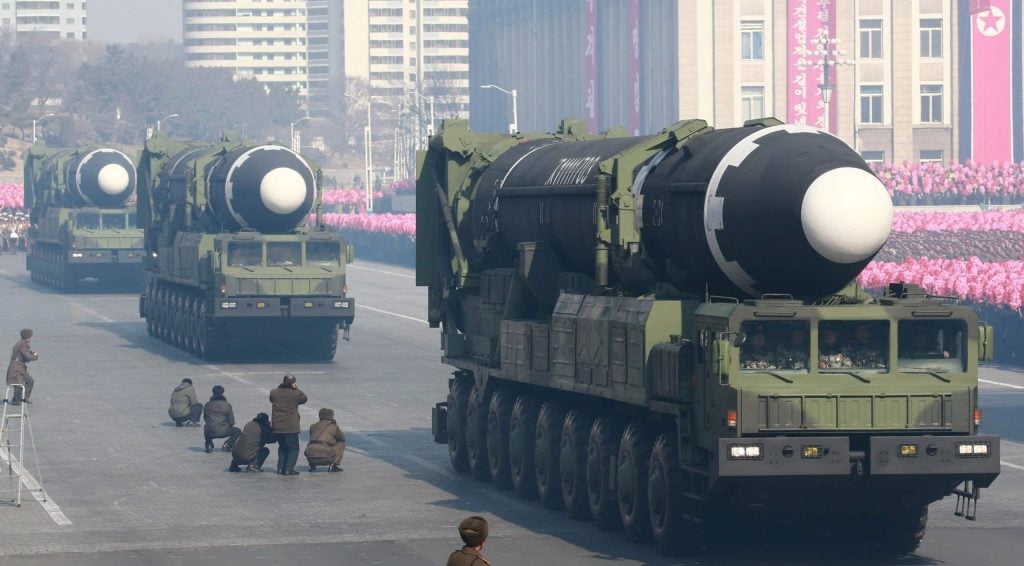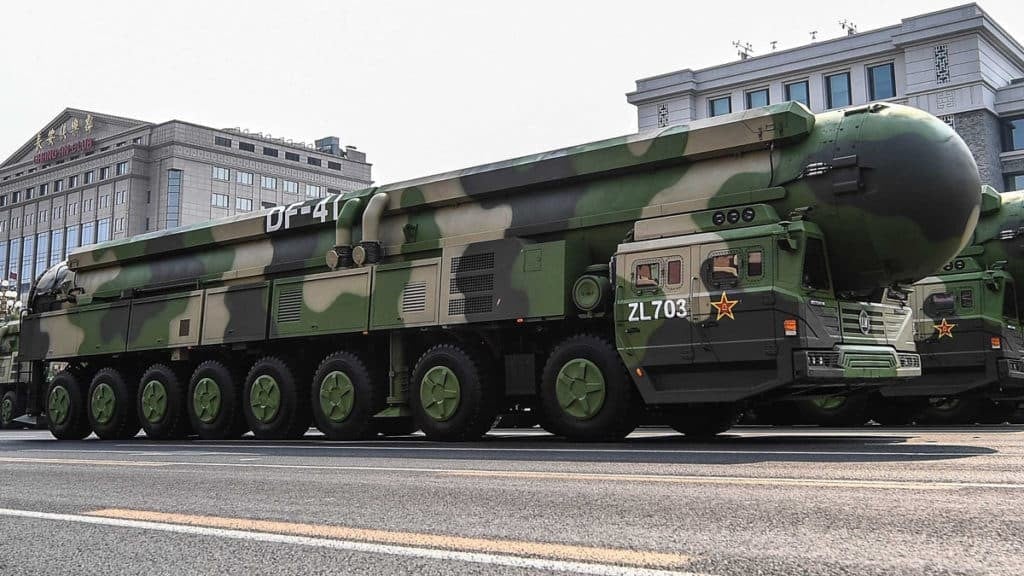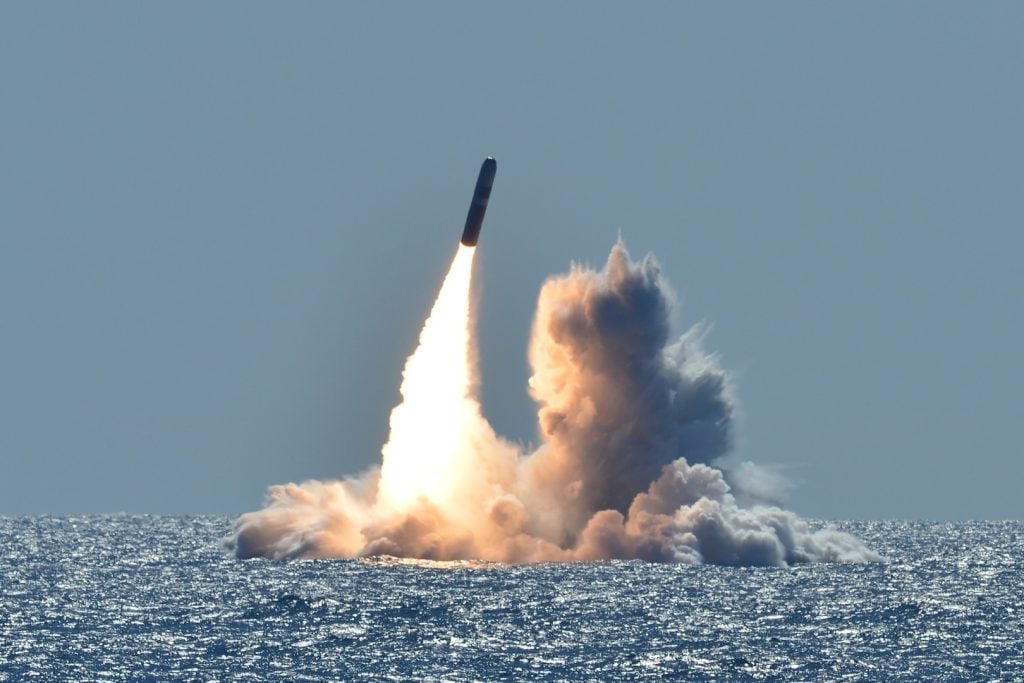In the ever-evolving landscape of global defense, the capability to strike distant targets with precision and power has become a crucial factor in determining military supremacy. Long-range missiles, with their unparalleled reach and destructive potential, have emerged as the technological marvels that shape the dynamics of modern warfare. From Russia’s formidable “Satan 2” to the United States’ reliable Minuteman III, these formidable weapons systems represent the pinnacle of engineering and strategic thinking.
In this comprehensive article, we delve into The 5 Longest Range Missiles You Should Know About, exploring their origins, capabilities, and the profound impact they have on the global security landscape. Prepare to be enlightened and awed by the sheer scale and sophistication of these technological wonders that redefine the boundaries of modern military might.
Top 5 US Fighter Jets That Never Took Off
1. Russia’s RS-28 Sarmat (Satan 2)
Emerging from the heart of Russia’s military might, the RS-28 Sarmat, affectionately known as “Satan 2,” stands tall as the undisputed champion in the realm of long-range missiles. With an estimated range of a staggering 18,000 kilometers, this next-generation intercontinental ballistic missile (ICBM) boasts unparalleled capabilities that send shockwaves throughout the global defense community.
The RS-28 Sarmat’s vast reach, coupled with its high payload capacity, allows it to carry multiple warheads, each with individual guidance systems. This formidable feature enhances its ability to evade defenses and strike distant targets with devastating precision, solidifying its role as the backbone of Russia’s nuclear triad. The successful testing of the RS-28 Sarmat in 2023 has further cemented its status as a game-changer in the global arms race, reaffirming Russia’s position as a dominant military power.
2. The Stalwart of the United States’ Nuclear Arsenal: LGM-30 Minuteman III
Hailing from the United States, the LGM-30 Minuteman III has long been a cornerstone of the nation’s nuclear deterrence strategy. Despite its decades-long service, this ICBM has undergone continuous upgrades to maintain its status as a reliable and precise weapon system, capable of reaching targets up to 14,000 kilometers away.
The Minuteman III’s range and multiple warhead capabilities make it a formidable deterrent, ensuring that the United States’ nuclear arsenal remains a formidable force to be reckoned with. As a testament to its enduring legacy, the Minuteman III has been a steadfast guardian of American security, serving as a crucial component of the nation’s strategic nuclear forces.
3. North Korea’s Ambitious Reach: The Hwasong-15
Emerging from the secretive confines of North Korea, the Hwasong-15 has captured the world’s attention as the regime’s longest-range missile. With an estimated range of 13,000 kilometers, this ICBM has the potential to target the continental United States, drastically altering the security landscape in the Asia-Pacific region and beyond.
The successful test flight of the Hwasong-15 in 2017 demonstrated North Korea’s technological prowess and its determination to develop a credible nuclear deterrent. This development has forced the international community to reevaluate its approach to the North Korean nuclear threat, highlighting the need for sustained diplomatic efforts and effective deterrence strategies.
Top 5 Military Jets That Shattered Records
4. China’s Formidable Deterrent: The DF-41 (Dongfeng-41)
Hailing from the rising military power of China, the DF-41 (Dongfeng-41) is a formidable intercontinental ballistic missile (ICBM) that boasts an impressive range of approximately 12,000-15,000 kilometers. This extraordinary capability allows the DF-41 to potentially target nearly any location on Earth, making it a crucial component of China’s nuclear deterrence strategy.
Equipped with multiple independently targetable reentry vehicles (MIRVs), the DF-41 can engage several targets simultaneously, enhancing its effectiveness and posing a significant challenge to any adversary’s defense systems. As China continues to modernize its nuclear forces, the DF-41 stands as a testament to the nation’s technological prowess and its commitment to maintaining a credible nuclear deterrent.
5. The Submarine-Launched Trident D5
Rounding out the list of the world’s longest-range missiles is the Trident D5, a submarine-launched ballistic missile (SLBM) that is a key component of the United States’ sea-based nuclear deterrent. With a range of approximately 12,000 kilometers, the Trident D5 can reach targets across the globe, providing the U.S. with a formidable second-strike capability in the event of a nuclear conflict.
Deployed aboard the Ohio-class submarines, the Trident D5 is renowned for its reliability and its ability to carry multiple independently targetable reentry vehicles (MIRVs). This versatility enhances the missile’s effectiveness, ensuring that the U.S. maintains a robust and resilient nuclear deterrence posture, ready to respond to any potential threats.
Navigating the Delicate Balance of Power
These five longest-range missiles, each a testament to the technological prowess of their respective nations, serve as a stark reminder of the delicate balance of power that permeates the global security landscape. As nations continue to develop and refine their missile capabilities, the need for international diplomacy and effective arms control agreements becomes increasingly critical.
The potential for unintentional escalation and the devastating consequences of a nuclear conflict underscore the importance of maintaining open communication, fostering trust, and pursuing multilateral efforts to enhance global stability. Only through a collective commitment to peace and responsible stewardship of these powerful weapons can the world navigate the complexities of the modern era and ensure the safety and security of all nations.
The Evolving Landscape of Long-Range Missile Technology
The realm of long-range missile technology is a constantly evolving landscape, with nations vying to push the boundaries of what is possible. Beyond the five longest-range missiles highlighted in this article, the world has witnessed the emergence of other remarkable weapon systems that deserve attention.
In October 2023, Russia announced the successful testing of a global-range nuclear-powered cruise missile named Burevestnik. With a reported range of 10,000 to 20,000 kilometers, this intercontinental missile further reinforces Russia’s position as a formidable nuclear power, capable of striking targets across vast distances.
Additionally, there have been ongoing developments in India’s Surya missile program, with unconfirmed reports suggesting a range exceeding 16,000 kilometers. While the specifics of this missile remain shrouded in secrecy, its potential to reshape the strategic landscape in the Asia-Pacific region cannot be overlooked.
As the technological race continues, the international community must remain vigilant and proactive in addressing the challenges posed by these advancements. Effective diplomacy, robust arms control measures, and a commitment to global stability will be crucial in navigating the complex and ever-evolving world of long-range missile technology.
5 Fighter Planes That Could Star in Top Gun 3
Conclusion
The five longest-range missiles in the world, showcased in this comprehensive article, represent the pinnacle of modern military technology. From Russia’s formidable “Satan 2” to the United States’ reliable Minuteman III, these formidable weapon systems have the power to reshape the global security landscape, posing both strategic and diplomatic challenges.
As nations continue to push the boundaries of long-range missile capabilities, the need for international cooperation, effective arms control, and a steadfast commitment to global stability becomes increasingly paramount. Only through a collective effort to foster peace, diplomacy, and responsible stewardship of these powerful technologies can the world navigate the complexities of the modern era and ensure a future of security and prosperity for all.
FAQ
1. Does India have an Agni 6 missile?
Agni-VI is an intercontinental ballistic missile currently in the early stages of development by India. The Defence Research and Development Organisation (DRDO) is responsible for its development. This missile is set to be the latest and most advanced version in the Agni missile series.
2. What is the range of Agni-5?
The Agni-5 is officially classified as an intermediate-range ballistic missile (IRBM) with a confirmed range of 5,000 kilometers. Nevertheless, some sources and media reports refer to it as an intercontinental ballistic missile (ICBM), which is defined as having a range exceeding 5,500 kilometers.
3. Which missile is most powerful?
The RS-28 Sarmat had its inaugural test flight on April 20, 2022. A state contract for the production and delivery of the Sarmat strategic missile system was signed on August 16, 2022. By September 2023, the missile officially entered service, becoming the world’s longest-range and most powerful active ICBM system.
4. Which country has the best air defence?
Israel’s air defense system is among the most effective globally. The Iron Dome, which started operating in 2011, was developed largely in response to the 2006 war and Hamas’s subsequent takeover of Gaza in 2007. It utilizes radars to detect and intercept short-range rockets, missiles, and drones.
5. What is the danger missile of India?
The Agni-V is a land-based Intercontinental Ballistic Missile (ICBM) with MIRV capability, developed by India’s Defence Research and Development Organisation (DRDO). It has a range exceeding 7,000 km.
